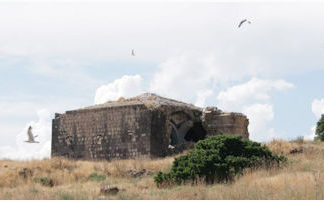Recent media attention over a new wave of Syrian-Armenians leaving Armenia in for new beginnings in Canada has sparked renewed concern about the state’s ability to integrate its refugees from the war-torn Middle East. Questions about the country’s prospects for tackling its corruption problem were also highlighted in a recent Radio Free Europe report where one Canada-bound emigrant at Yerevan’s Zvartnots airport cited notorious government-connected oligarchs Ruben Hayrapetyan and Samvel Alexanyan by name as having made it impossible for him to run his small business in Armenia.
Similarly sensationalized reports of Syrian-Armenians taking part in a second exodus, this time from their ancestral land, marks a stark contrast with initial expectations of the impact that droves of Syrian repatriates would have on Armenia; bringing up dark memories of previous waves of unsuccessful repatriation efforts of Iraqi and Azerbaijani-Armenians in prior decades.
As civil unrest in Syria morphed into full-blown civil war, the country’s ancient Armenian community was devastated. The Armenian authorities, however, were quick to respond, offering automatic citizenship to ethnic Armenians living in the Middle East, and even setting up passport offices in the Armenian embassy in Damascus. Flights from Damascus, Latakia and Aleppo continued to bring waves of refugees (which Armenia branded as “Repatriates”) to Yerevan. When it became impossible to fly, many took to the roads; driving through Turkey and Georgia to make it to safety in Armenia. It is estimated that between 15,000 and 17,000 Syrian-Armenian repatriates came this way.
Throughout the war, ethnic Armenians were largely spared the fate of many of their Syrian compatriots, with as many of 5 million of them being squeezed into refugee camps spread throughout Turkey, Lebanon and Jordan, or forced to illegally cross the Aegean to Europe, while others remained in the devastated wasteland their country had become.
Armenia’s relatively low living standards and struggling economy, notwithstanding, the country garnered international praise in its efforts to assist the refugees. Syrian-Armenians were offered certain benefits, including housing, assistance with basic needs, Eastern-Armenian, and Russian classes, community centres, favorable small business loans, and so on. Repatriates, particularly from Qamishli, willing to relocate to Artsakh were offered free land and special tax rates.
Many in Armenia welcomed this influx from Syria because it was expected that their reputation as entrepreneurs, and high skillsets would invigorate a sluggish economy, while their social skills would shake up the service sector. The result was that within a year, 40 new Levantine restaurants and eateries opened their doors in Yerevan, while countless other small businesses began operating across the country.







